Ralph Gibson Monochrome – 100% SOLD OUT at $28,000 each!
That was FAST. I had a feeling this special limited edition Ralph Gibson would indeed sell out because the set was absolutely jaw dropping gorgeous and there are always some out there looking for ways to spend their cash. Only 35 sets were made which included the Monochrom in a special limited edition color of chrome and black with a special Ralph Gibson signature on the top and a special edition 35 Summilux FLE. A fancy box and strap topped off this kit. Normally a Monochrom and a 35 Summilux would run you $13k so this one was more than double the cost of a normal set. It doesn’t do anything different but it sure is pretty!
So 35 lucky people out there have this beautiful set. The question is..how many will USE the camera and how many will sit the box on a shelf?

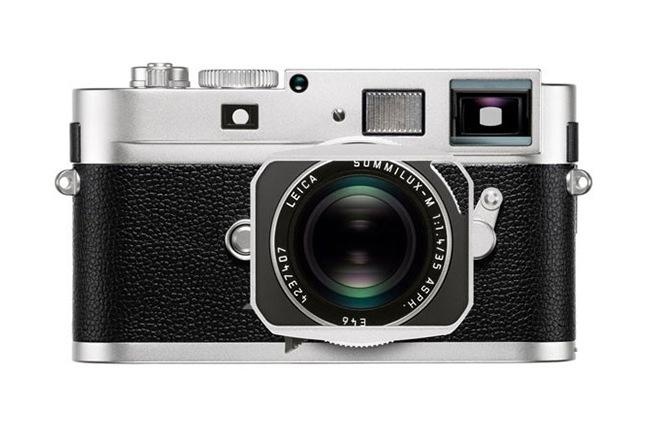
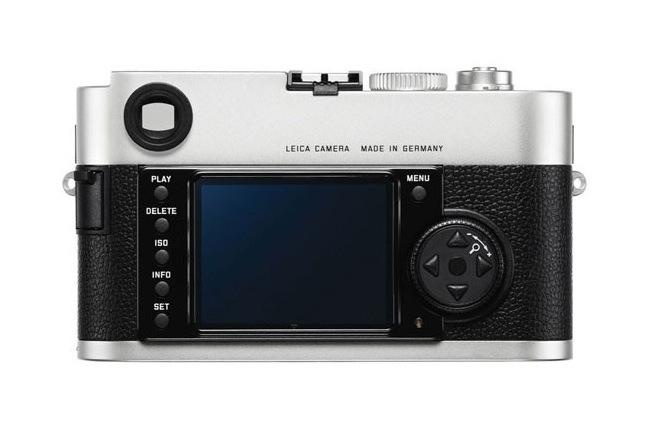
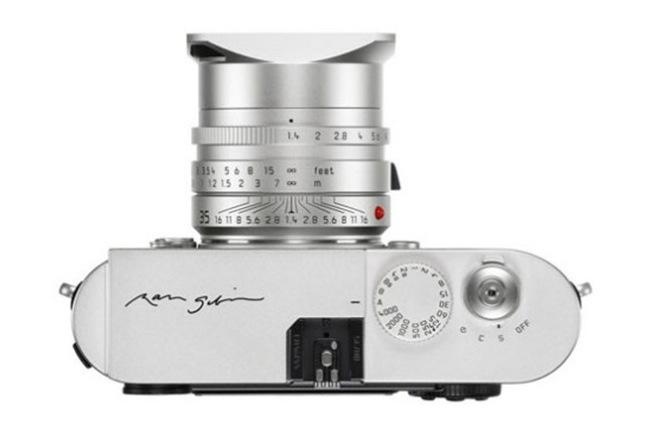
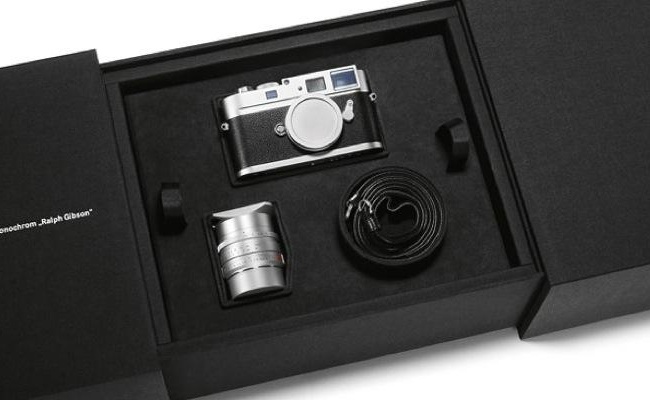
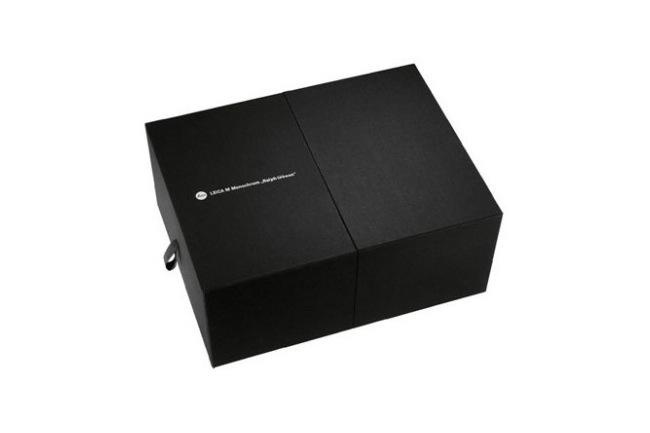
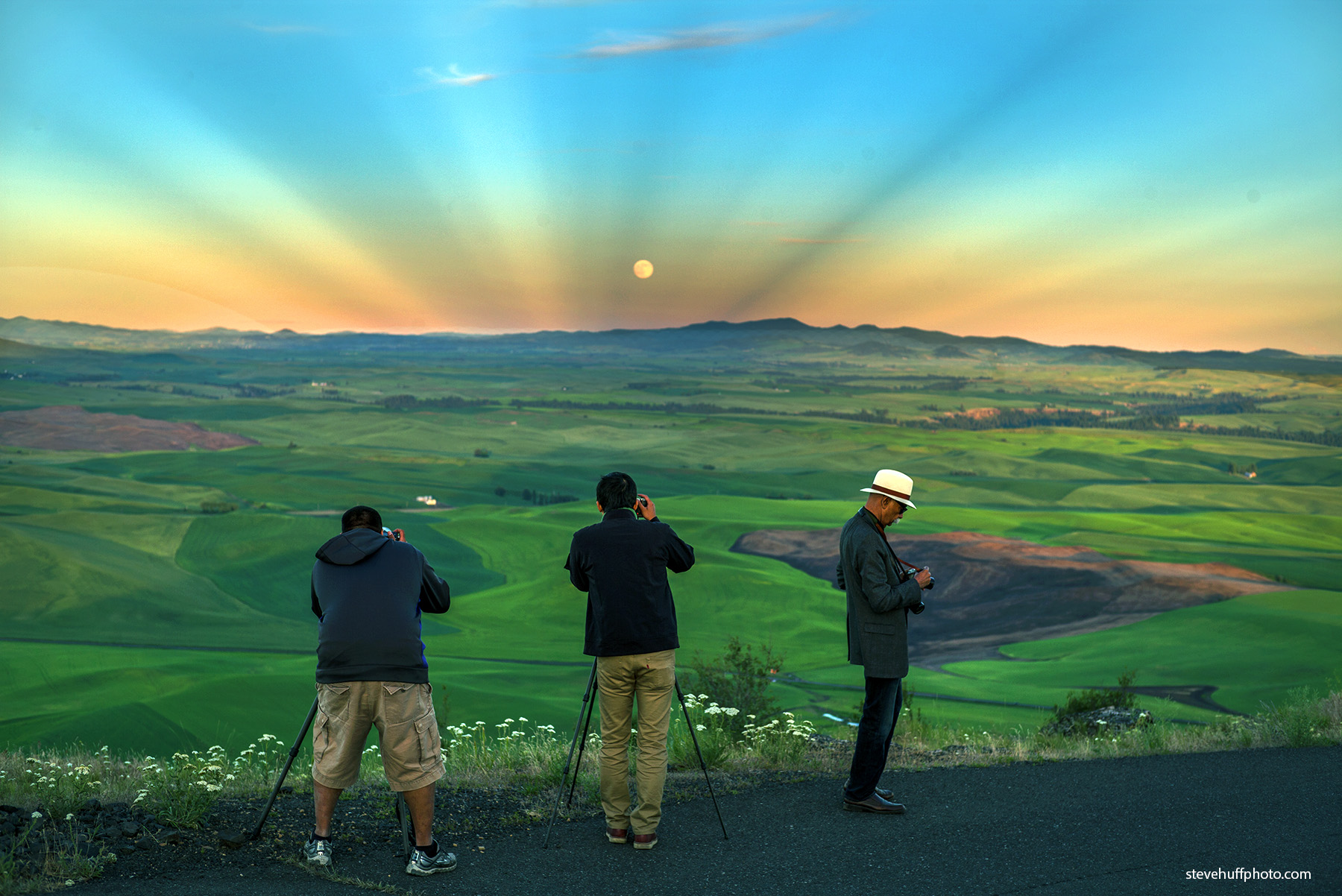


Please help me out here: why is everybody slashing Hasselblad with their HV/A99 camera while being euphoric about this special edition Leica? Are you all snobs, are what? For a collector, both cameras have their value, imho. Don’t want to be offensive to anyone. Just my 2 cents.
I have bashed it because it is a Sony with a new paint shell. The SE Leica is a LEICA made and designed camera that has nothing like it on the market (besides the original MM). If Hasselblad put out an all original camera then it would be a different story but this is 100% a Sony A99 with 100% Sony A99 innards. Is $7500 worth a new shell and name tag? No way. In regards to the Leica SE MM, only 35 were made and it while it is outrageously priced it is not a full production run camera, it was a limited 35 run edition with lens and book and different color than the original..but the key word is “original”, which is what the MM is. The HV is not, it is an A99 that can be had for well under $3k.
Steve,
According to my research, this special edition Leica + lens is different only cosmetically too, just like the Hasselblad. So collectors pay premium price basically for a) a signature and b) a limited edition photo book and c) a nice leather strap and bag. So if Hasselblad had a) associated some other reputed photographer willing to put his name on their camera, b) added a limited editon book to the package and c) threw in a nice leather bag and if only they had produced just 35 of them, then they would be in the same ballgame.
Ah, all this is just a sign of the times: Leica is doing very well and can get away with this, while Hasselblad is struggling to survive, under heavy fire from 36Mpixel full frame cameras, while desperately trying to create a hype themselves (and failing miserably).
I’m with both of you on this 😉
If you take cars as an analogy… Aston Martin charge you £31K for a pimped up Toyota IQ. That’s more than double the regular price. The only difference is leather trim and blingy bits and an Aston Martin badge. This is the Hasselblad.
Lamborghini made a special edition Gallardo in honour of their test driver Valentino Balboni. It featured numerous upgrades, special paint job, Balboni signature, and limited to 250 copies. This is the Leica.
The Lambo is the more honest of the two. It’s still a Lamborghini. The Aston is a scam to get emissions down across their range of cars. Is still just a Toyota.
Main difference is that neither car company charged anything like the same mark-ups as Hasselblad and Leica do on their respective products.
So maybe the moral is… if you want a good special edition, buy a Lamborghini.
David, great shots. You say you are a “hobbyist”? What exactly is your hobby where you can get drop dead gorgeous women to strip for you so that you can take their picture? My mother always told me I neded to find a good hobby. FOUND!!! Where do I sign up? Jeff
Thanks for the reply David, and again, really nice work.
Huss
I think the M9 Titanium is the most gorgeous camera Leica ever made.
Okay, it’s a collector’s item, I get that. But “absolutely jaw dropping gorgeous “?! It took me a while until I found any differences (in appearance) to the normal production model.
If it took you a while to see a difference then I have to ask if your eyesight is OK..they are 100% different in appearance as one is a faded matt black and one is a chrome. The Chrome is classic Leica – much like the Chrome M9-P was purchased over the M9 steel grey just for looks alone by many. Chrome and black for a Mono camera..is IMO gorgeous. I would not pay $28k for this set but I wish I could!
It’s a lovely looking camera, no doubt about that. In the end of course it’s a Monochrom, so one could save a lot of money and go on some very interesting trips, and make exactly the same images. But that’s not the point of this camera, and rightly so.
I buy photo gear to use it and because I am attracted to it. The myth of the brand, tactile delights, the engineering feats. But in the end, I use it. If I don’t like using it (Nikon F3, Contax S2), I sell it.
Now would using a special edition FM2n (Lapita, Year of the Dragon, very expensive) feel any different from using a normal FM2n (which I’ve had for 24 years, and feels like an old friend)? I fear not.
I can see the attraction in owning a very special limited edition, but use it, till its knobs fall off!
I was lucky enough to get invited to the unveiling event and opening of the Leica Store (in the video you see me applauding and taking pictures, lol!). Ralph Gibson is a genuine nice guy and his book Mono is a gem!
I really have no issues with any of this. If there has to be a “luxury” camera manufacturer in the world, it should be Leica, after all. They’re more or less in a market of one, and they’re financially successful right now because of it.
What irks me is when photographers assume [or claim] that the Leica shooting experience is therefore “better” [as if these prices are a reflection of a superior shooting experience] or that Leica IQ is superior to everyone else. That’s just patent nonsense. By and large Japanese optics caught up to Leica more than 40 years ago. And the “Leica look”? Total myth … especially today.
The reason Leica lenses give many the impression of being “better” is because Leitz pour all their resources and expertise into every piece of glass, no expense spared. The Japanese companies don’t do this with every lens because they are targeting a much larger consumer volume market. Call it the benefit [or perhaps curse] of winning the camera market over four decades ago.
However, when those same Japanese manufacturers put their expertise to work to make top-of-the-line pro glass, it’s every bit as good [if not better] than what Leica produces [and still costs less]. Image the sort of 50mm standard lens Nikon or Canon could produce if were they to charge $4K for it?
Bottom line: there is absolutely nothing about manufacturing optics that Leica knows today that the Japanese didn’t figure out more than four decades ago … and computer design has long since massively leveled the playing field.
I shoot Leica range finders because I like the experience and because I am pleased with the results. I don’t spend any time comparing my images to those of Nikon and Canon, nor any other camera. Japanese optics can of course be excellent, but they aren’t produced in range finder size in top class models by Canon and Nikon. I would not want to walk around shooting with an SLR with large lenses, and that is what the best Nikon and Canon cameras are. From what I read the performance of Canon and Nikon lenses varies considerably from model to model. There is some small variation with Leica lenses but all are very high quality and can be used freely on all Leica range finders ( exception being the old collapsible lens). One of my favorites is a 50 year old 90mm Elmarit that is tiny, focuses quickly and accurately and renders beautifully.
You shoot what you want, and I will shoot what I want. I don’t spend time telling everyone what’s wrong with Canon and Nikon, and I suggest you stop posing as an expert and telling all of us what’s wrong with Leica. Leica can clearly take care of themselves.
“I suggest you stop posing as an expert and telling all of us what’s wrong with Leica.”
Uh-huh. It is what it is. No one’s forcing you to reply to my factual statements. If you don’t happen to like what I’m saying, then I suggest you simply ignore it and move along. No need to get defensive about it.
No one is defensive. I don’t care what you shoot or what you think. Your statements are not factual, but purest opinion.You my friend are the defensive one who cannot stand to be challenged. Your anti- Leica bile just keeps coming out.
“You my friend are the defensive one who cannot stand to be challenged.”
—
1. We’re not friends
2. Let me know when the challenge starts
No we aren’t friends. You are a pompous fool, and I don’t have such people as friends.
Can we perhaps agree then that, side by side, if one had both a film leica and a digital leica beside each other to compare, that it does feel like some of the luxury in the feel and “action” of the camera didn’t quite make it over to the digital side?
That’s essentially how I’ve felt. I love my M4. I haven’t found that same love in the M9 or MTyp240.
I don’t agree at all. I have an M6, an MP an M9 an MM and an M240. They all shoot essentially the same. I have 25 years experience with these cameras. More important, I like the pictures they take. Does anything else matter? Not to me. And what would be my alternative? I don’t like the weight and bulk of SLRs. I don’t like looking through a peephole. I don’t use zooms because their image quality is less than primes in the SLR range. I don’t want to use the new full frame Sonys because they don’t have a full range of lenses. They feel too small in my hand And I don’t want a cropped sensor. Image- wise I see no reason to be dissatisfied with Leica. I have several lenses ranging from new to 50 years old and they all perform well and please me. All of the internet chatter is to me, just that. Chatter about non-essential bits of information or based on rumor or unfounded statements.
If you do not love the M240 or the M9, so be it. But yours is one opinion ( as is mine) and that’s all. Too many people on here take a bit of information or an opinion and try to turn it into some great blinding revelation. It is tiring. The M9s and M240 are very successful in the marketplace and they aren’t mainly purchased and used by self aggrandizing, frivolous people. Or by fools.
LOL!
Normally, I just ignore folks who troll, but now you’re just bullying everyone who says ANYTHING remotely negative about Leica.
And your statements? Wow … just wow; breathtaking in their ignorance.
You opened up a can of worms over on the ‘Leica T’ thread by belittling those who legitimately criticized Leica for all the badge-whoring of recent years, now you’re over here continuing the attack.
“I don’t use zooms because their image quality is less than primes in the SLR range.”
Well, I’m sorry to have to inform you, but that’s just not always the case. Go do some research on the AF-S Nikkor 14-24mm f/2.8G. You might actually learn something.
As to the rest of your diatribe, well, like the old saying goes, “if you’re not part of the solution…”
Ah the never-ending debate of Nikon/Canon vs. Leica . . . Aside from what always confused me as to why people try to use compare completely different form factors (SLR/DSLR vs. rangefinder), or neglect that every lens have unique but immeasurable contrast/color/bokeh signatures (i.e., the “Look”), I’ve always found it puzzling how one can claim. objectively, another one’s characterizations of the intangible factors are somehow incorrect or nonsense. To me it almost like saying “I disagree with you why red is the best color.” Trying to make black/white on issues that reasonable minds can differ seems a bit futile to me.
I shoot Nikon for studio, wildlife, and underwater — those are universes that Leica (at least the M) never intended to challenge. Does Nikon make terrific lenses? Of course! The 400mm f/2.8 VRII is one of the best lenses on earth. Can Nikon make a prime lens with all objectively measurable qualities like T-pass and LoCA superior to that of Leica? Perhaps. have they? Not really if you take into consideration some of the objectively measurable qualities (MTF to start, T-pass also notable); but we all know those “objective” measurements of quality are inherently flawed because they aren’t based on real-life shooting (which is what Steve tries to do here). This is why, for instance, the Summilux 24mm ASPH lens has a spherical focus plane (for street shooting) as compared to a flat focus plane of the Nikon equivalent (for photos where geometry is more important) — they are intended for different purposes.
Every experience Nikon and Canon shooter knows that these days one 85mm f/1.4 does not necessary equal to another 85mm f/1.4 because of factory QC tolerance by Nikon (I know because I’ve owned three). Nikon shooters could look to the Zeiss Otus to match the precision and QC of Leica lenses (for about the same price as the Leica equivalent). But how well a camera body pairs with the lens to make a system is also important. The quality control (or lack of) of the D800’s AF/viewfinder problem can make the use of high QC lenses like the Zeiss Otus to be a very frustrating experience when shot wide open. Leica (at least thus far) has never given me such problems.
But circling back to the intangibles since that seems to be what people are focusing on here — an amusing observation: I’ve never had a model/subject asking me if they can play or pose with my Nikon setup, but on many occasions they have asked to play/pose with my Leica for a shot or two (and posing with a “Leica look” whatever they think that might be). Does that quirky fact make the camera a better photographic tool? Probably not (though models can get creative). Is it a testament to design? Probably. Is design important? Just ask Steve Jobs.
Brave soul. I agree with you. Watch out , though, Falconer will come after you.
No reason to get personal. It’s only a camera, perfectly capable of producing inane images like every other camera in the world.
Can you imagine one of these, sitting on a bookshelf or in a display case? One day, someone takes it off the shelf, inserts the now “inert” rechargeable battery and discovers that not only will the camera not work, but that the battery can no longer be charged, or self-destructs in the charger.
Fun for $28k.
😉
Not sure what is the punch line here but if the premise is that the camera would become technologically retarded decades from now, of course that is a given and in that sense this camera is no better than any other digital camera. So if the punch line is that $28k is lot of money to pay for something that would ultimately useless, no arguments there. But then again, how well do you think a $28K car (electric or gasoline) or $28K PhaseOne digital back function decades from now?
If the question is about the ROE decades from now (i.e., how much will this $28K camera be worth later), well — the lack of operational functionality hasn’t prevented auctions of decades-old Leicas to reach hundreds of thousands of Euros . . . In other words, functionality and future worth has no positive correlation, statistically speaking. But rarity does matter, hence why the Nikon 13mm f/5.6 can fetch almost $20K these days even though there is hardly a practical use for that lens.
But of course this is really just a discussion in theory, since most of us live for today and now . . .
In one of the hospital libraries, there’s a book about “Mono”. I don’t think it has anything to do with photography or $28000 camera kits…
How very clever.
Proof, as if any was needed, that Leica under the guidance of Mr Hoffman has become a camera company for collectors not photographers, Ralph Gibson notwithstanding. In the old days when legendary Leicas were discussed, proof offered were iconic images by other legends such as Henri Cartier-Bresson or
Andre Kertesz. Sometimes you wouldn’t even see a picture of the camera itself. Nowadays, an image of the camera takes center stage and almost like an afterthought proof of its superiority is shown by technically perfect but trite photo examples made by people who are competent but hardly legendary. .
I believe that Gibson is now using the Monochrom and has been effusive in his praise of it. There was a book of his Monochrom images released at there same time the camera was released.
I am not interested in “special edition” anything, but I think it is a bit silly to draw sweeping conclusions based on the sale of a handful of cameras.
The Monochrom is a great camera, but it really does not need to be silver plated. Companies should be free to create products, however, and individuals should be free to purchase what they choose.
The no-true-Scotsman premise of this comment is a bit lost on me as to how the ultimate conclusion is reached. Does the fact that Leica makes special edition cameras or that Brad Pitt and Scarlett Johansson are seen brandishing their beloved Leicas make Leica a less of a capable camera maker? As the daily inspirations that Steve posts suggest, its seems there are plenty of people making magical images with Leica instruments?
A Leica M3 with 50mm f/1.2 back in 1954 was cataloged at almost $500 back then, which is about $4,000 in today’s dollar. A Leica instrument was never a bargain even in the days of Henri and Andre when people spent a lot less on cameras to begin with.
I don’t know who is Mr. Hoffman but since 2009, under Dr. Kaufmann, Leica went from a marginally profitable, near bankrupt company to having some of the most profitable years in recent history. Meanwhile, Canon and Nikon have had some of the worst financial years. While the artistic pillars of photography should always be cherished, the business of photography must (as with all businesses) evolve. Recognizing strategic inflection points (i.e., smartphones), as Andy Grove coined the term, is key to survival and success. Leica quite frankly has just done that in recent years by cleverly marrying technology with traditional design that technology alone cannot really substitute, all the while delivering financial results that shareholders expect. Until we sit on the board and are intimately involved with the business, all we can really do is judge a company by their products. Whether a product is successful en mass is ultimately measured by demand. Thus far, Leica does not appear to have a problem with demand. Of course, a “real” photographer always has a choice to pick any one of the other many instruments available as his or her tool of creativity. At the end of the day, however, the intangibles, not the tangibles, speak to the heart. There is nothing wrong with making the process of taking photos as every bit as pleasurable as viewing of the photos, IMHO 🙂
Nice Comment
I think Leica users invented the Selfie. I’ve seen more selfies with Leica cameras in them over decades. That really says something about how secondary the actual photography is to being seen with a Leica around ones neck, especially when the followup is photos that the person actually took which turn out to be boring, pedestrian, or the sort of thing one could take with an Argus C3.
Interesting. People take pictures of themselves with Ferraris also, not so often with Toyota Camrys. But the guys who win races with Ferraris aren’t so interested in the shot standing proudly next to the car.
Surely you don’t mean to say that all Leica pictures are boring pedestrian, etc., just the ones taken by the fools creating the selfless, right?
It’s not uncommon for a winner to include the instrument of his victory in his celebrations. Racing cyclists stroke or kiss their top tube, racing drivers stand on their car, jockeys cuddle their ride. I wonder how I can make a bridge to photographers…
It seems to me that professional photographers usually aren’t that blatantly interested in the brand of their gear; it just has to work. Unless they’re paid to be interested of course.
When Leica brought out their initial brochure for the M240, it was littered with some of the most pedestrian images I’ve ever seen, all shot by Magnum photographer Jean Gaumy. It was shocking really, and I remember it generated a lot of WTF? comments on this very site.
It proved, beyond a shadow of a doubt, that it’s not the camera, it’s the photographer, who makes the picture.
But I think if I were working for Leica’s PR department, I would want to showcase my product with promotional materials derived from truly talented photographers, be they professionals or amateurs. In fact, were I Leica I would probably do some research across the four corners of the globe and put a new M240 into the hands of a half-dozen super talented emerging shooters and let them go to town with it for a few months. Then see what they came back with and use the best of that imagery to promote the camera.
But, Leica is likely unconcerned, because the rich are the only ones who can afford their products these days; most talented photographers cannot afford to drop $10K on a camera with a single 50mm lens.
Where I live, there is a Leica boutique in one of the local camera stores. I was told in no uncertain terms that 90% of the buyers are uber-wealthy Asians, many of whom had little exposure to photography [I’m not talking about “snapping pictures”], but simply wanted “the best”. There is a great deal of money in Asia these days, and it’s a big market for luxury goods. I was also informed that Leica is well aware of this and it was one of the chief considerations for opening the boutique at that location.
The earliest notable Leica selfie (perhaps loosely defined as a photo in which you can see the camera used to take said photo) I know would be one by Ilse Bing in the early 1931. Ed van der Elsken was also known to pose with his Leica rangefinders (often with a muse) via a mirror. There were many famous photogs who took selfies with their Leicas but for the most part I don’t think people generally regarded their work as boring or pedestrian. But the camera that appear the most in photog selfies (before the smartphone that is) wasn’t the Leicas — they were the Rollies This was because of a very simple fact — you can’t really compose a selfie very well using a rangefinder, but a double reflex camera allowed top-down viewing and hence instrumental for reflective selfies. As for the many photos of people with a Leica hanging on their necks (like the famous one of Larry Burrows before he was shot down in Vietnam or Penelope Cruz with a M3 hanging tom her neck while having a cigarette)– well everyone knows those are not selfies — those are editorials or portraits taken by another camera. For those who are truly confused as to the meaning of “selfie,” simply Google the term or, conveniently, Leica has published a book of samples called Leica Myself, available in multiple languages for about $45 🙂
They are indeed nice looking. Almost as nice as the Fuji x100s.
Haha I see what you did there 😉
The funny thing is, the regular Monochrom is the most attractive camera Leica makes. This special edition, is less attractive.
i have been familiar with Gibsons work since before i became a photographer, i actually helped hang a showing of De Ja Vu in the early 70’s . . . and later when i did become, and began to make my living as a photographer i considered him one of my “heros” and for years swore by tri- x in my M2 and rodinal in the dark room ….. that said, 28 grand for a Gibson Monochrome ? i think it’s somewhat “effete” (ralph might appreciate the choice of word if not how i’m applying it ) . . . . and i’m left with the feeling that the only explanation for choosing to own one of these is the same answer to the question of why dogs lick themselves . . . .
From a collecting viewpoint, I can see buying a limited edition fully mechanical camera as they will last, and work, next to forever.
But a limited edition digital camera? If it is to be used, cool. But if the intention is to box it up and store it, who knows if it will work in 10 or 20 years time?
I requested a chrome version of the Monochrom when it was announced. Leica said no. Now I know why. 😀
Each to his own I guess. $13K is a lot for the extras and there’s no rational justification for it, however you spin it. This kind of celebrity snob stuff just really isn’t my thing. But good luck to Leica if they can get this kind of money for it. And if people want to pay that kind of money then who am I to argue? It’s a free country.
If I were in this income group… HA LOL ! ~ Anyway.. a better shopping list would be the OM-D E-M1, Fuji X-T1, Nikon Df, Sony RX1, Sony A7, Sony RX100 II, Sony RX10, Panasonic GX7, Lenses, Lenses and the best Coffees available at all times… and still a bank account with a good balance! Life must be good for some!
Very ammusing FoTo…..talk about NOT using something. That would be the biggest waste of money….and all of them lose value day 1 after you get them.
Good luck to whomever picked this up. Enjoy and you spend your money however you want to you!!!
There’s some very rare Nikon F’s and F2’s (Apollo, NASA), in mint condition for sale… Big numbers!
I have a feeling they can do monochrome as well…
:):)….
I’m not a Leica fan at all, but could I see myself acquiring an FM2n Lapita or Year of the Dragon (new, unused in box, with all documentation), or an SP limited edition? Mmm… I’d use the little b*st*rds though!
Isn’t there something better you can do with your money . I am glad someone is keeping Ralph a rich man for another year .
Whether there is something better one can do with their money than the Leica collectibles is always an interesting question that ppl raise.
Like art, Leica collectibles typically keep up with inflation values and then some. For example, anyone who bought the M7 titanium special edition cameras have more than doubled their money in today’s secondary market; for the large three-lens set, your return is more like 4X or 5X, which dramatically outperformed the S&P 500 in the same period. The Leica MP titanium was sold for $8.8K in 2007 when it was introduced in Tokyo, more than twice the price of a regular MP. Today, the MP Titanium camera range between $35K to $40K, handily beating the S&P 500 during the same period.
There are, of course, a few duds in the Leica collectible editions, and it’s unclear whether the digital special edition cameras will hold their value as well as the film cameras (so far, they have) so you’d need to shop it carefully just like you would any other investment assets. When it comes to what you can do with your money, it’s never really about the price — it’s about what it will be worth in the future. So while a RG Monochrom set may be 2X the price of a normal Monochrom + normal FLE, your rate of financial return with the RG Monochrom (along with his signed print) will likely earn a return in the future as there are only 35 samples while the normal Monochrom + FLE will likely depreciate. On balance, if financial reward is the goal, the RG set is a better spend than the normal Monochrom + FLE. Meanwhile, and perhaps most importantly, you get to use a beautiful camera set!
if one purchases a camera for $28,000, one does not care what that camera is worth later on…..the only people worried about resale value would be if they purchased the camera with their visa card 😉
That’s valid point, as it is the intangibles what drive the margins and at some point intangibles should be treated as consumables (i.e., not assets). But you can say the same for people who collect art, exotic cars, etc. As much as intangibles are intrinsic in value, why not be logical and make returns at the same time 🙂 As someone who put myself through college via only scholarships and investment returns (through the 90s no less), there is nothing wrong with considering the financial consequences of consumable decisions, to which is what my comment was really in response. Just because you have money doesn’t mean you shouldn’t spend it without regard. And there is nothing wrong with earning 28K miles or points on your visa card instead of using cash (provided you pay the balance in full each month of course) — I welcome a free domestic roundtrip ticket 🙂
Leica should concentrate on lifting product reliability instead of producing garbage like this and similar
Vlad to what quality control issues of Leica have you experienced? I haven’t heard of Leica having a light-leak problem (Canon Mar III) or any AF problem (Nikon D800) . . .
M9 and M8 sensor issues, misfocus to name a few…
Florence, that remark about RG being a rich man is actually rather painful. I saw a recent picture of Robert Frank the other day. He seems to be living in poverty. No wealth for the great photographers I’m afrraid.
I don’t know what gives you the idea that Robert Frank is “living in poverty” other than your mistaking housekeeping for a financial statement . . . .
Could be. That’s why I said “seems to be living in poverty”.
It seems like everyone is becoming Celebrity Groupies! Photography needs to stay above all this nonsense and stay focused on making “New” Pictures.
Very cool! Our economy, Germany’s economy and the world economy can use the spending. I personally am holding out for the Monochrom that will come later this year with ability to use an EVF and focus peaking. My eyes have grown too crappy for the Rangefinder (or is it that the Rangefinder has not kept up with my eyes?).
Very Impressive. Can’t afford a Leica of any description but who is Ralph Gibson? Another Jony Ive?
Ralph Gibson is (or at least I thought) a well-known B/W photographer. I especially like his work with nudes.
Now I understand. Have never warmed up to the B&W crowd. Don’t suppose the folks who blew $28k will be running around photographing nudes either.
Well, I do 🙂 http://www.davidyangimages.com
Just checked out your site David, really nice shots. A question about the lighting… some of the shots are really muted. How did you light those? And if you used your Leica, what ISO level? It seems like it would be high but the images are really smooth.
If you don’t want to spill your technique secrets, I understand!
Best regards
Huss
Hi Huss, thank you for checking them out; like everyone else I am a hobbyst so by no means is my way the “right” way. I light via either day light or constant light sources. If the latter, either daylight units like a Kino, or a tungsten source like an Arri 1K or sometimes 2K with the barn doors or grids. These light sources are very, very bright so as much as the photos may look like they were shot in the dark, there was plenty of light around to use low ISO and fast shutter. But there are situations where you want to work with twilight or just a regular 60W bulb, in which case I’d typically go ISO800 with the Noctilux at f/0.95; depending on the distance you can do anywhere between 1/15 to 1/125 shutter.
Who is Ralph Gibson? Serious? Google him, read up, and fill that gaping hole in your photographic knowledge. It’ll be a lot cheaper than actually buying a Leica, RG or otherwise, and lead you to making better images a lot quicker. Read up on other photographers as well and study their images, if only to disagree with them. Very cheap, very rewarding. You always learn something I find, as does visiting museums.
True words, Michiel! I just purchased Peter Turnley’s latest book, French Kiss – A Love Letter to Paris. Can’t wait for it to get here!!
Follow him on FB; interesting! Twins as well.
At least with this Leica “edition” he made justice to his practice of “surreal juxtaposition” and it would be interesting to know the “contextualization” he and Leica used to share the profits. 🙂
It offends me to see high-quality photographic tools treated like expensive jewelry and kept in a safe to be admired and coveted, but never used.
Well, I was one of the lucky ones who got one, which arrived last week. In addition to the camera + lens there is also a special-edition RG photo book (8X14) and a signed print by RG (only 35 prints of the photo were made for purposes of this edition). There is also a black leather carrying bag (with white stitches). I had owned a Monochrom before this but sold it when I bought the M240 (silver) thinking the M240 will do just fine with B/W. But, as it turned out, the M240 was not the equal of the Monochrom for B/W and when this edition became available, I couldn’t resist . . . the silver FLE looks great on the M240 to boot . . .
Financially, these special edition cameras hold their value quite well (the M9 Titanium, Hermes, still sell in the secondary markets above their original MSRP). And, does it give me 2X pleasure to use it? I have to say, in all honesty . . . yes! we’re never gonna survive, unless we get a little crazy, sometimes 🙂
I envy you! Gorgeous camera and congrats!
Fabulous! Enjoy!
Will normal use and shutter actuation count not spoil the selling value?
There is def a premium for “brand new never used” sets but the price difference is a lot less than people think. The secondary-demand almost always drive up the price above the MSRP even years later (provided you don’t drop it or damage it). If you are pure collector/investor then you wouldn’t shoot it, true. But if you are a hobbyist who is okay with parking your cash for a while — you basically get to use a very special camera (gently) and /if you decide to sell it later you will either get all of your money back and them some, or “lose” some value that I am pretty sure will not exceed the deprecation of a non-special equivalent set.
The RG Monochrom, at only 35 sets, is one of the more rare modern Leica collectibles. Along with signed photo of a living artist, I wouldn’t worry about shutter actuation being a huge depreciating factor for this set. The most rare recent Leica collectible is of course the Johnny Ivys M which sold for $1.2M for charitable cause, followed by the M3-P Vienna set (only 20 set, with the silver Noctilux) that sold for $25K in 2011 but probably will demand north of $60K today).
My guess: 100% of them will stay in their sealed boxes sitting in various oligarchs’ vaults (until the future day they turn up at Westlicht to be auctioned off to other oligarchs.) Although I suppose it’s possible a few owners whose job title is “Sultan” or “Emir” might give them to their kids to use for holiday snaps…
You have nailed my sentiments exactly!